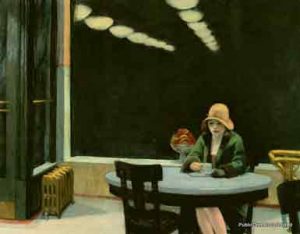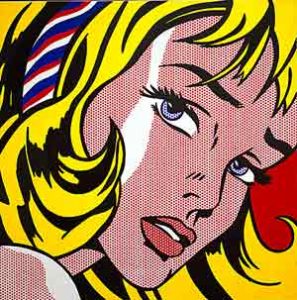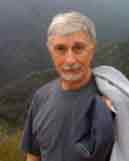The Nuts and Bolts of Mounting a Major Bicentennial Celebration in Germany
by Robert Baker
The Watergate scandals and President Nixon’s resignation had seriously damaged America’s reputation. Germany’s reaction in the aftermath was partly to pat us on the shoulder and to murmur,
“ There, there… we still love you”. One element of that welcome reaction was the huge number of German celebrations of our Bicentennial in 1976. The Germans took the lead by organizing dozens of major public events to honor the U.S. partly for our key role in German defense but also for our help to rebuild their country after WWII.
The celebrations serendipitously gave me two cases of French champagne and a golden hour turning the vellum pages of a Gutenberg Bible, one of only a dozen surviving in Germany and among just 40 worldwide.

Bonn in 1976 was the capital of Germany, before East and West Germany reunited in 1990 with Berlin as the capital. GIs passed out Hershey bars to German kids at the end of WW. By 1976 some of those hungry kids had become powerful and grateful men.
The huge swell of celebrations was to show their appreciation and support for the United States, particularly after our embarrassing Watergate imbroglio. (The German taxpayer back then also paid about $ 5 billion annually to help support the 400,000 American troops stationed in Germany as protection against communism.)
Because I worked with our Cultural Centers across Germany, in 1975 I received dozens of requests from all over the country for Embassy representation at German celebrations of our Bicentennial.
Requests flooded in from all over Germany for American official and academic speakers at Bicentennial events, American flags, performers, etc. Personal birthdays in Germany are major events, as are (or were) national historical ones. I felt the American Embassy had to put on a big Bicentennial show of its own in Germany; otherwise inaction by us would seem to snub our hosts’ generous celebrations.

The cheapest way to make a big Bicentennial splash was to organize an important American art exhibition in Bonn and to publicize it well. In 1975 Ambassador Martin J. Hillenbrand signed off on my telegram to Washington asking the U.S. Information Agency to put together paintings for a museum quality exhibition to be called “Two Hundred Years of American Painting.”
I used that grab bag theme because I knew all the best American paintings were already committed to Bicentennial shows in the U.S. or Europe. By using such a general theme, I hoped we could still scrape together some good works despite our late start. Properly organized exhibitions of fine art take years to prepare with long negotiations to borrow paintings from public or private collections.
Though the Ambassador signed off on my proposal, he did not add his personal support. Guys at USIA (United States Information Agency) headquarters, no doubt chary of the scope of effort under tight deadlines, to say nothing of its expense, turned down my request.
About March 1976, Ambassador Hillenbrand became alarmed at the flood of requests he had received directly, asking him to speak at German Bicentennial celebrations. He called me to his office and told me to send in my request for a fine art exhibition again. This time he added his strong support, and that convinced Washington to help.
I asked for and got an extra $40,000 from USIA for various local costs including a handsome exhibit catalogue. I also was allowed to hire one German assistant to help with the huge number of details in creating the show and putting it across in German media as a major event.
After the OK, I rode around sleepy Bonn on Sundays on my bike looking for likely exhibition sites. The Landesmuseum (State Museum) seemed the best pick as it was professional, centrally located and had a large temporary exhibition space. I paced that space off and found it suitable for about fifty paintings, what I needed for our show. I found that the museum had a hiatus in its special exhibitions schedule.
My boss, Alan Dodds, our Cultural Attaché, an urbane Southerner, called upon the Landesmuseum Director with me to ask if we could mount the exhibit there. Alan spoke fluent German and I did fairly well in it. Alan had agreed to lend his prestige to the request. When we met at the museum with its Director and his staff, it turned out that that an opening in the museum’s summer exhibit schedule suited our needs. We could open on the 30th of July in their temporary exhibitions space and occupy it for a month. (Later we would send the exhibit to our embassies in Greece and Yugoslavia.)
Minutes after the Landesmuseum Director had agreed to host our exhibit, the Attaché received a telephone call from the Embassy summoning his immediate return As he rose to leave, he told the Director that I would make the detailed arrangements.
I was flabbergasted. I had never before arranged a major art exhibition and was counting on Alan to lead the discussions. Grabbing at any lifeline, I drew on the small exhibits I had arranged in London as reference, asking the dozen Museum experts around the table about museum security, temperature and humidity controls, insurance, staffing requirements, transportation to and from the airport for the show, publicity, catalogue preparation, the opening reception, etc.
I asked if the exhibit opening could accommodate the entire German Parliament as guests. It could. That political tie made the Director happy to cooperate as much as possible. It also made the Ambassador happy when I reported back.
Michael, the bright young German I hired to help with the exhibit, did an excellent job. He later joined the German Foreign Service and became Special Assistant to Germany’s most distinguished recent Foreign Minister, Hans Dietrich Genscher.
The U.S. Information Agency in Washington, D.C., gave a grant to the Baltimore Museum of Art to hire a curator to pull the paintings together from collections in the U.S.
Despite my telephone calls and cables, there were numerous delays in sending the English language catalogue materials about the paintings, which we needed urgently for translation into German.
From the U.S. we also needed professional, photographic, four-color separations for the dozen paintings I wanted for the catalogue in color, including the cover. Those also came very late. The other paintings had black/white illustrations.
A handsome catalogue was the centerpiece of the plan to make a media splash across Germany. We wanted to make sure Germans knew we appreciated and honored their celebration of our Bicentennial. Indirectly but clearly, that would underscore the importance we gave to the German/American military and political alliance in NATO.
The catalogue was to be a handsome presentation item, with lots of color, printed on fine paper. We sent it to every newspaper, magazine, radio and television station in Germany, with additional copies to the chief editor and the publisher. Our top German contacts received an Ambassadorial invitation to the opening. Other copies with photos and publicity material went to each art editor. By including an Ambassadorial RSVP invitation to each publisher or media owner, we brought the show to his/her personal attention. That resulted in better coverage.

Our excellent staff art expert, Dr. Dorothea Von Stettin, was assigned to draft prefatory art notes for signature by the Ambassador while I drafted for the White House a short preface for signature by President Gerald Ford. The wording was approved, and the President’s remarks appeared at the front of the catalogue. Those prefaces stressed German-American amity and the many connections between our countries in art as well as politics.
Unhappily, while well done, the curator’s selection of paintings and submission of catalogue materials were very slow in coming. The opening date grew closer and closer. And my arts contact in Washington did not respond to repeated urgent requests for assistance. The Landesmuseum staff grew testy waiting to approve the Embassy translations. Finally, in dribs and drabs, the materials arrived. Our staff worked long hours; the Landesmuseum approved the catalogue materials, which were then sent to a local printer recommended by the museum.
When proof copies came back, I insisted that the German printer redo the front cover and several inside color plates repeatedly until they precisely reproduced the colors in the originals. Sloppy printing seriously betrays the chief purpose of a catalogue. Just in time, 5,000 copies were beautifully printed. My staff mailed them across Germany to literally every radio, television, newspaper and magazine publisher and chief editor, etc.
My efficient German exhibits assistant arranged German police security for the Frankfort airport arrival of the exhibit and then its transportation to Bonn across several German internal borders.
I went with him in an Embassy car to the Frankfurt airport because an American officer had to sign the invoices for the incoming crates of paintings.

Another worry was that domestic terrorism was rampant at the time and our exhibit made an easy target as it would be on the road from Frankfurt to Bonn for more than a hundred miles in a large and unmistakable art van.
The total value of the paintings was about $150 million dollars in 2011 terms. The U.S. government is a self-insurer, so we had to make sure the shipment was safe for financial as well as aesthetic and political reasons. German security arrangements performed like clockwork. Three police cars fore and three aft of the art van changed places smoothly with new ones as we passed from one German state to the next on our drive from Frankfurt to Bonn. Our Embassy car was last in line.
Safely in Bonn with the paintings, we discovered a new problem when the crates were unpacked. The museum staff members were upset, while I was furious to learn that twelve of the paintings had arrived unframed with only ten days to hang the exhibit before it opened. A telegram to Washington brought extra money especially to hire and bring down skilled artisans from Hamburg. They framed the paintings with a few days to spare.
Most of the Bonn Parliament and many leading government, cultural officials and writers attended the crowded opening. The Museum decorations looked great. We had bought good champagne cheaply at the French Embassy commissary and ordered excellent local canapés. Food and drink were circulated by uniformed waiters after the speeches by the Ambassador and German officials. The French champagne proved especially popular.
National German television covered the exhibit. Only a handful of the distant editors we invited actually attended, but almost 150 magazines and newspapers carried spreads on the event and on the exhibit. We had hired a German company to track all mentions of the coverage.
The show did what it was intended to do politically. America had recognized Germany’s loyalty in a highly public way. The Ambassador was pleased. It was also not bad aesthetically for a scratch history of American painting from Benjamin West to Ellsworth Kelly. The catalogue’s brief history of American painting was by Dr. Joshua C. Taylor, Director of the National Collection of Fine Arts. My German staff also initiated and produced handy bibliographic guides (for both written and video materials available from our posts throughout Germany) for visiting teachers and school groups.

We had sent information about the exhibit to other posts, hoping to reduce costs by sharing the exhibit after Bonn. Two posts wanted the exhibit, so we translated the catalogue into those languages, printed thousands of copies in Bonn, and shipped them and the exhibit to those countries.
From my point of view, two cases of excellent French champagne left over for my own representational events for German guests helped wash away the weariness and frustrations.
During that same year, our dozen excellent German staff members organized some 500 events in Germany for our twelve posts, in addition to the big show in Bonn. These ranged from a simple paper exhibit show on American history, to elaborate traveling seminars on U.S. history, politics, etc. and American musical performers. It was an exhausting year, but wonderful for me in some special ways.
For example, the University of Gottingen library requested help for their American Bicentennial book exhibit. I carried down to Gottingen the background historical materials requested, and some American flags and bunting. The Director of the university library gave me a tour of their excellent special display of American books collected by the local prince two hundred years ago for his library. The prince’s library had become the heart of the University library. The prince had even corresponded with Benjamin Franklin. Their letters to each other and a first edition of Franklin’s autobiography were on show. Seventeenth and eighteenth century American books on witchcraft, theology, originals of Thomas Jefferson publications, etc. were part of the excellent exhibit. I was delighted by the show and praised it highly.
The Director said that perhaps I would like to see one of their great treasures. He took me into a special room, opened a wall safe and took out a metal case. Inside the case was a dark brown wooden and leather case. And inside that case was an original Gutenberg Bible, one of a dozen held in all Germany. The case was the original one sold by Gutenberg with his Bible. It had a side compartment containing leather cutouts of giant Gothic capital letters. I assume that was in case the original purchaser wanted to illuminate giant capital letters on some pages. Such decorative capitals were common in the hand-made Bibles before printed ones became available. Left alone with the treasure for an hour, I turned the pages, reading bits of the old German Gothic script. The large vellum pages were heavy to turn. That hour alone with the Gutenberg Bible, the first printed book in the West, was one of the best hours I ever had in the Foreign Service. It was utterly unexpected and wonderful. I had always loved books. I never dreamed that one day I would hold in my own two hands such a magnificent treasure. Foreign Service had some great rewards.![]()

